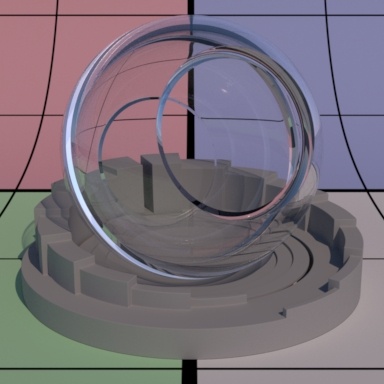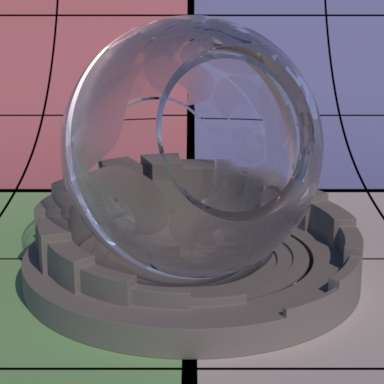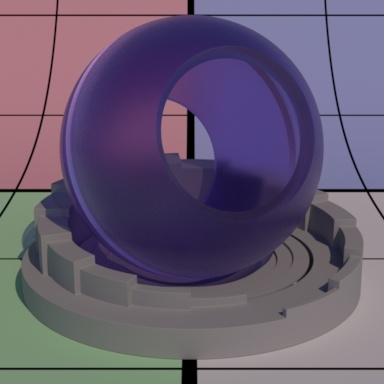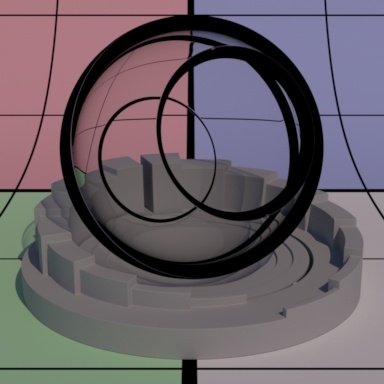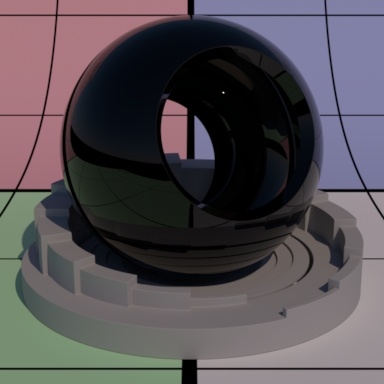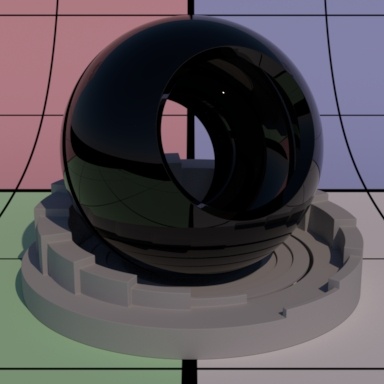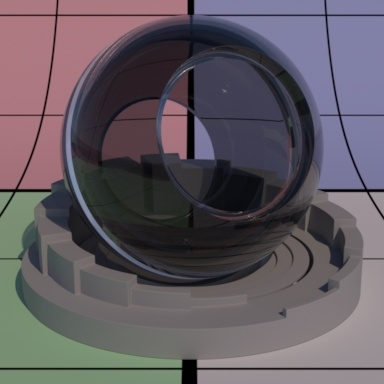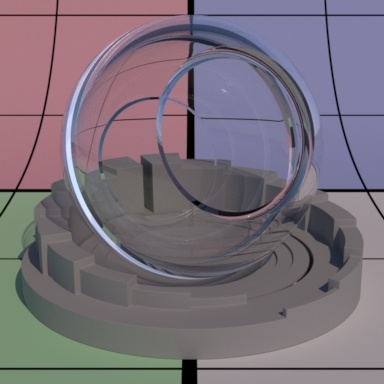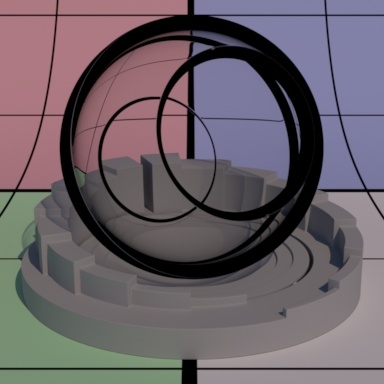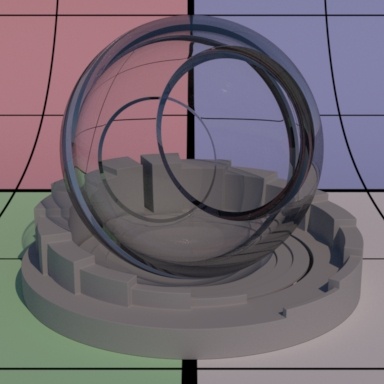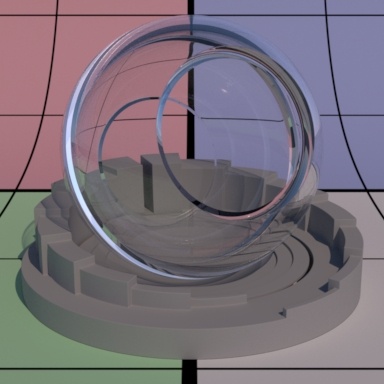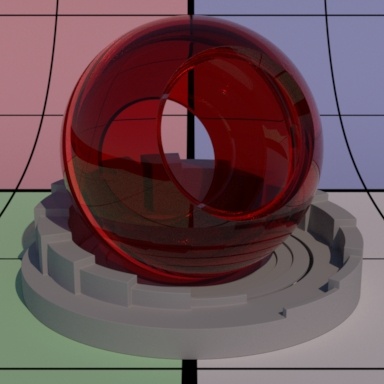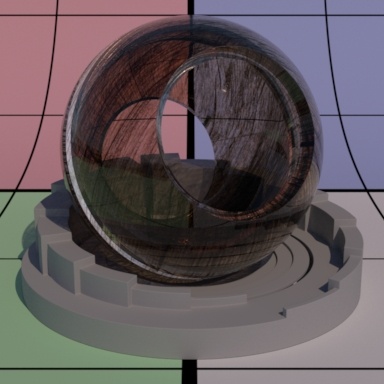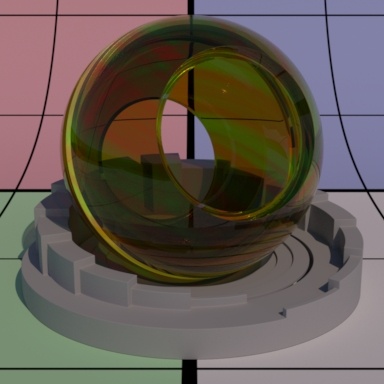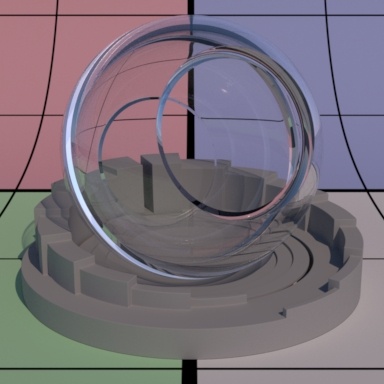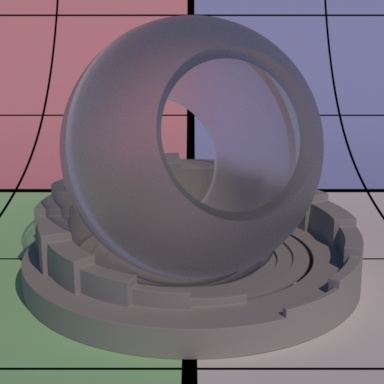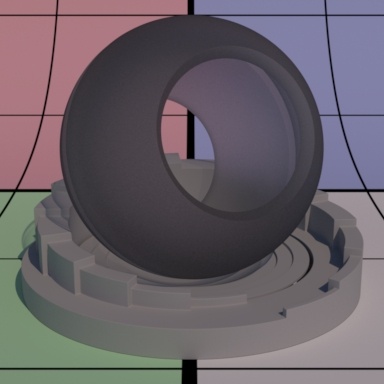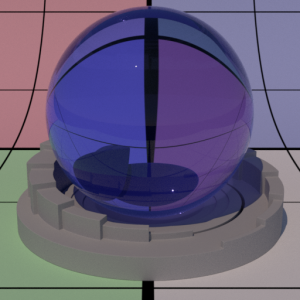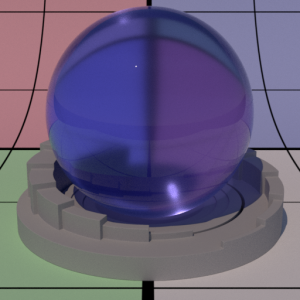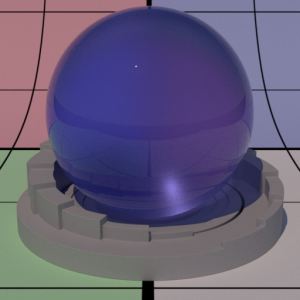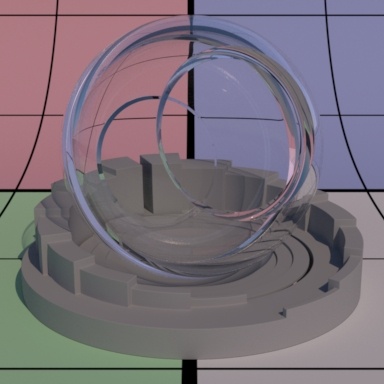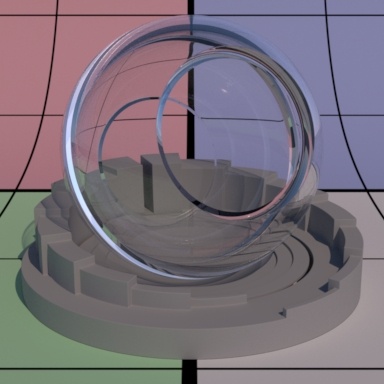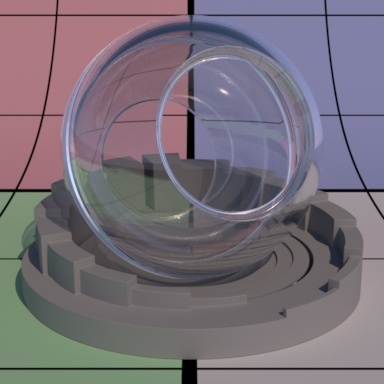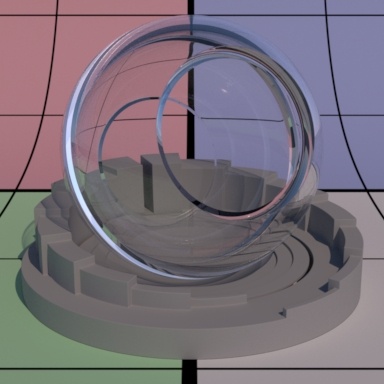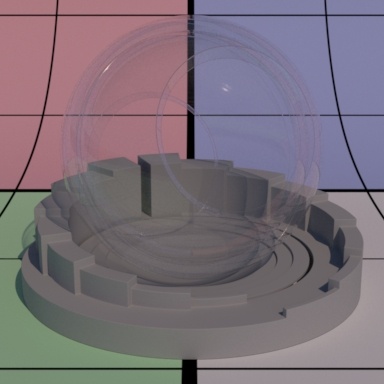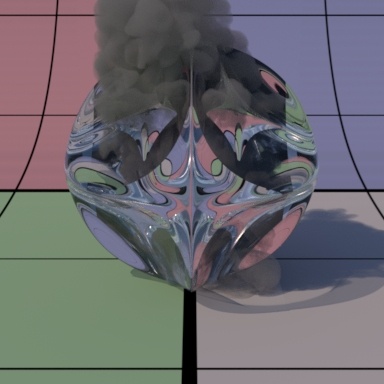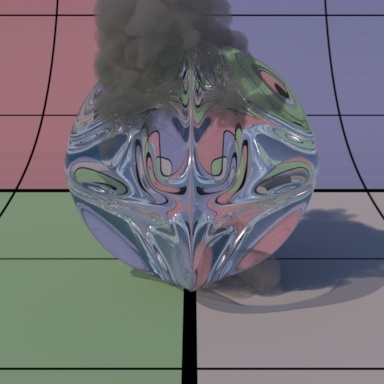...
Glass Parameters
Glass parameters are meant to provide a single location for creating and manipulating a physically based glass result. Anything from clear to a colored glass with all levels of roughness and fog in-between are available.
| Note |
|---|
The Refraction and Reflection Gain controls are meant to work together. Using one or the other alone may result in interesting effects but isn't intended by design. Also note that when creating glass for the first time, you will find the default gain of 1.0 for Diffuse may interfere with your look. Turn the gain for Diffuse to 0.0 for pure glass.
|
Refraction Gain
Refraction gain is a multiplier. Lower numbers result in less light making it through the object and might appear as dark tinted glass or simply black at 0.0.
Reflection Gain
Reflection gain is a multiplier. Low numbers decrease the visible reflection result. A setting of 0.0 results in an unrealistic look as seen in the first image below.
Refraction Color
Refraction color. This allows you to create objects that are realistically colored and have colored shadows just like real transmissive objects (note that Thin Shadows should be enabled on your lights).
Roughness
Refraction and reflection roughness. Here is where you would simulate frosted or etched glass.
Refraction Roughness
When set to a non-negative number, allows the refraction roughness to be different than the reflection, which is controlled by the Roughness parameter above. Below the reflection is non-rough (0.0) while the refraction roughness increases slowly.
Refractive Index
Index of refraction. The default is 1.5 which is typical of glass. Online resources of Ior values can provide more useful settings. Higher Ior values bend rays more than low values. Use Thin if you want to avoid bending rays.
Enable Manifold Walk
This sets the glass object to allow exploration for caustic light paths, used with PxrUnified integrator and the options for the Manifold Walk
Manifold Walk IOR
This allows the user to artistically override the refraction index set in the glass lobe for calculating caustic light paths in conjunction with the controls for Manifold Walk found in the PxrUnified integrator.
Thin
If on, correctly split energy according to Refractive Index between reflection and refraction, but do not bend the ray in refraction (simulating a double pane of glass with a single pane or maybe a hollow glass ornament). The below interior parameters are not meant to operate in this mode.
Ignore Accumulate Opacity
This ignores the setting in the integrator to collect alpha values based on glass opacity/refraction.
Ignore Fresnel Weighting
This turns off reflection but allows rendering pure refraction/transmission. This is useful for compositing.
Blocks Volumes
This setting omits or blocks volumes from rendering when they pass into the interior of the glass object. This also disables the interior settings for the glass lobe. The default is off (left) and on is shown on the right.
...

